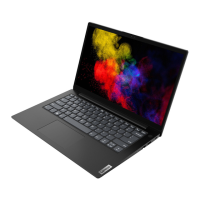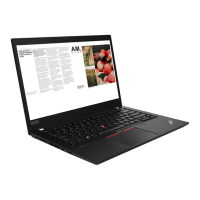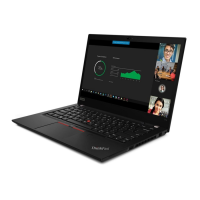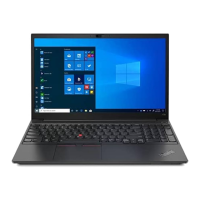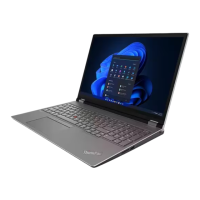Do you have a question about the Lenovo V15 Gen 2 and is the answer not in the manual?
Details the Novo Button menu options for system recovery, BIOS setup, and startup.
Describes hotkey mode settings and the FnLock switch function for customizing key behavior.
Overview of managing computer power, battery status, charging, and power button functions.
Configure different performance modes for optimal balance between performance and power consumption.
Access and configure UEFI/BIOS settings for system initialization and hardware configuration.
Modify boot order and adjust hotkey behavior for system startup and input functions.
Secure your system by setting administrator and user passwords in the UEFI/BIOS setup utility.
Detailed steps for managing administrator, user, and power-on passwords for enhanced system security.
Implement and manage hard disk passwords to prevent unauthorized access to stored data.
Details the Novo Button menu options for system recovery, BIOS setup, and startup.
Describes hotkey mode settings and the FnLock switch function for customizing key behavior.
Overview of managing computer power, battery status, charging, and power button functions.
Configure different performance modes for optimal balance between performance and power consumption.
Access and configure UEFI/BIOS settings for system initialization and hardware configuration.
Modify boot order and adjust hotkey behavior for system startup and input functions.
Secure your system by setting administrator and user passwords in the UEFI/BIOS setup utility.
Detailed steps for managing administrator, user, and power-on passwords for enhanced system security.
Implement and manage hard disk passwords to prevent unauthorized access to stored data.
| Form factor | Clamshell |
|---|---|
| Product type | Laptop |
| Product color | Black |
| Housing material | Acrylonitrile butadiene styrene (ABS), Polycarbonate (PC) |
| Numeric keypad | Yes |
| Pointing device | Touchpad |
| Keyboard backlit | No |
| Panel type | TN |
| Display diagonal | 15.6 \ |
| Display brightness | 250 cd/m² |
| Native aspect ratio | 16:9 |
| Processor cache | 8 MB |
| Processor cores | 6 |
| Processor family | AMD Ryzen™ 5 |
| Processor frequency | 2.1 GHz |
| Processor cache type | L3 |
| Processor manufacturer | AMD |
| Processor boost frequency | 4 GHz |
| Motherboard chipset | AMD SoC |
| Internal memory | 8 GB |
| Memory clock speed | 3200 MHz |
| Internal memory type | DDR4-SDRAM |
| Maximum internal memory | - GB |
| SSD capacity | The Solid State Drive's storage capacity in Gigabytes. |
| Storage media | SSD |
| Total storage capacity | 256 GB |
| Number of SSDs installed | 1 |
| Discrete graphics card model | Not available |
| On-board graphics card family | AMD Radeon Graphics |
| Audio chip | Realtek ALC3287 |
| Audio system | Dolby Audio |
| Speaker power | 1.5 W |
| Number of built-in speakers | 2 |
| Front camera resolution | 1280 x 720 pixels |
| Antenna type | 2x2 |
| Wi-Fi standards | 802.11a, 802.11b, 802.11g, Wi-Fi 4 (802.11n), Wi-Fi 5 (802.11ac) |
| Bluetooth version | 5.0 |
| Top Wi-Fi standard | Wi-Fi 5 (802.11ac) |
| Ethernet LAN data rates | 100, 1000 Mbit/s |
| HDMI version | 1.4b |
| USB 2.0 ports quantity | USB 2.0 ports have a data transmission speed of 480 Mbps, and are backwards compatible with USB 1.1 ports. You can connect all kinds of peripheral devices to them. |
| Password protection type | User |
| Trusted Platform Module (TPM) version | 2.0 |
| AC adapter power | 65 W |
| Battery capacity | 38 Wh |
| Battery life (max) | 7.5 h |
| Depth | 235.8 mm |
|---|---|
| Width | 359.2 mm |
| Height | 19.9 mm |
| Weight | 1700 g |



